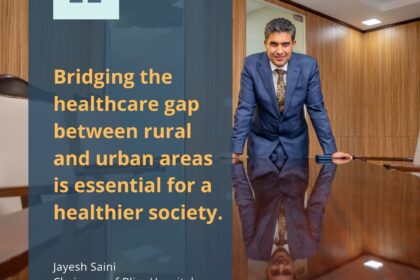Interfaces with Intention: Making Digital Tools Feel Human
As Kenya’s digital health systems expand—from teleconsultation to remote diagnostics—the spotlight has largely remained on access, efficiency, and scalability. But a new question is gaining urgency: Are these tools being designed for real humans, not just ideal users?
Empathy in digital healthcare doesn’t stop at bedside manner. It begins in the interface—in how apps greet users, how chatbots interpret emotions, and how culturally relevant language guides a patient through a complex healthcare journey.
In the case of private networks like Bliss Healthcare and Lifecare Hospitals, digital transformation has been more than just a backend overhaul. It has included deliberate, human-centric redesigns of their digital touchpoints to ensure accessibility, warmth, and trust—especially for patients unfamiliar with or anxious about digital systems.
The Problem: Cold Tech, Warmer Expectations
Too often, digital platforms in healthcare feel transactional. Click here. Upload this. Wait for response.
This may work in e-commerce. But in health? It risks alienating the very people the systems aim to serve.
For example, early user testing within Bliss’s mobile app revealed a consistent pain point: older patients struggled to navigate the platform, not due to lack of tech literacy, but because the tone felt robotic and instructions lacked emotional clarity. The interface didn’t feel like a guide—it felt like a gatekeeper.
This prompted a complete UX rethink—grounded in empathy.
Designing for Trust: Lessons from Bliss and Lifecare
Across Lifecare and Bliss platforms, several intentional shifts have emerged that offer a blueprint for human-centered digital health:
1. Conversational Chatbots that Reflect Cultural Nuance
Bliss Healthcare rolled out a Swahili-integrated chatbot designed not just to answer questions, but to do so in a tone that mirrored the politeness and empathy expected in in-person consultations.
- Instead of “Invalid input,” users now see “Let’s try that again together.”
- Instead of “Your symptoms do not match a known category,” users are prompted: “We’re not quite sure. Would you like to speak to a nurse?”
The bot isn’t just efficient. It’s comforting.
2. Visual Simplicity, Not Technical Density
Lifecare Hospitals revamped its online booking interface to reduce steps, add color-coded categories (like maternal care, dental, pediatrics), and integrate pictograms for low-literacy users. Feedback from patients in Kisumu and Eldoret suggested that these design choices significantly improved comfort with the platform.
3. Inclusive Design for Accessibility
Bliss platforms introduced features such as:
- Voice-based navigation for visually impaired users.
- Simplified language toggle for patients with low literacy.
- Offline functionality for areas with unstable networks.
These aren’t just UX features—they’re ethical decisions.
The Emotional Journey Is Part of the Clinical Journey
Digital tools aren’t just solving for symptoms—they’re accompanying patients through fear, uncertainty, and hope.
This insight drove a redesign of Lifecare’s appointment reminders. Instead of generic texts, patients now receive:
This message carries a human tone. It anticipates the anxiety of the unknown. And it has reduced appointment no-shows by a significant margin, according to internal monitoring.
Bridging the Empathy Gap Through UX
UX is now a core pillar of patient trust. And in countries like Kenya—where digital divides and health inequities intersect—interface design is not cosmetic. It’s clinical.
In Jayesh Saini–backed systems, UX teams are working hand-in-hand with frontline staff to continuously test, improve, and humanize the journey. This includes:
- Storyboarding the patient’s full emotional arc, not just the transaction.
- Translating medical instructions into local dialects.
- Using avatars, testimonials, and audio cues to build rapport.
When patients say, “I understood the app,” they’re also saying, “I feel safe here.”
Moving Forward: Intention as Infrastructure
As Kenya’s health sector races ahead in digitization, the next frontier will not be faster apps—it will be more thoughtful ones.
Interfaces built with intention can close trust gaps faster than policy announcements. They can comfort as well as inform. And they can turn passive users into engaged patients—especially in underserved communities where healthcare has long felt impersonal or out of reach.
The private sector—led by digital innovators like Bliss Healthcare, Lifecare Hospitals, and leaders such as Jayesh Saini—is showing what’s possible when empathy and tech evolve together.
In Kenya’s urban centres, the conversation around healthcare is shifting—and fast. Where affordability once defined the contours of decision-making, a new benchmark is emerging: the quality of experience. Today’s healthcare users, especially in cities like Nairobi, Mombasa, and Kisumu, are looking beyond just price tags. They are actively seeking care environments that reflect their lifestyle, values, and expectations of professionalism.
This shift is a reflection of Kenya’s socio-economic transition—an expanding urban middle class, rising health literacy, and increased exposure to global service standards. And it is this very evolution that is reshaping how care is delivered across the private sector.
Nowhere is this more evident than within networks developed under the leadership of Jayesh Saini, where the emphasis on patient-first innovations has redefined what healthcare delivery can and should look like in modern-day Kenya.
From Budget to Belief: The Experience Economy Hits Healthcare
Historically, discussions about healthcare access in Kenya have been framed around affordability. And rightly so. For millions, cost remains a barrier. But in urban settings where a growing number of individuals now carry insurance, have disposable income, or seek higher-value care for chronic conditions and family health planning, the priorities are shifting.
Today’s urban patients are demanding:
- Predictable wait times and real-time appointment systems
- Clean, welcoming environments free from overcrowding
- Professional service delivery from front-desk to discharge
- Transparency in care processes and billing
- Access to modern medical technology and multi-specialty services
This trend reflects a broader movement: urban Kenyans are no longer choosing healthcare simply on affordability—they’re selecting it based on trust, atmosphere, responsiveness, and personal comfort.

